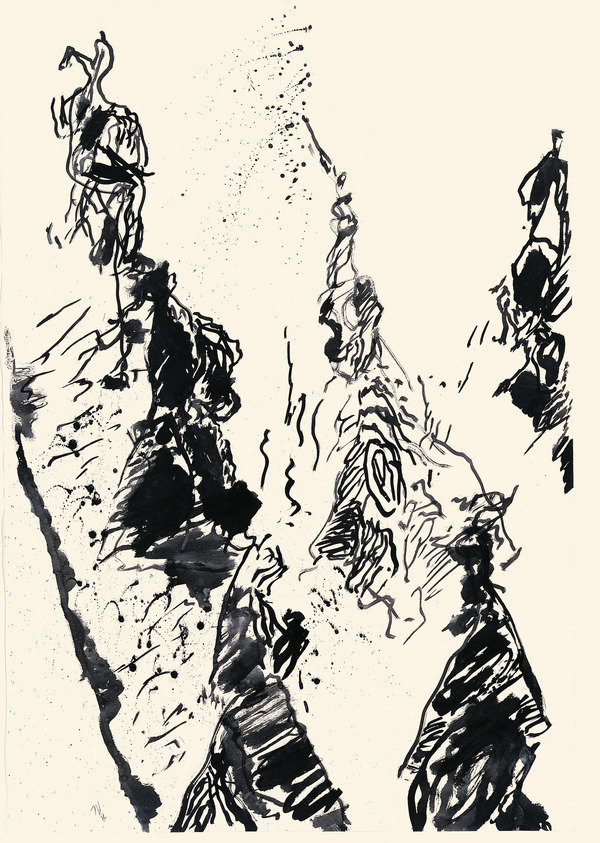Max Weiler
dal 11/9/2012 al 17/11/2012
Segnalato da
11/9/2012
Max Weiler
Pinakothek der Moderne, Munich
The graphic artist. The exhibition shows a representative selection of some 80 works on paper that were on display in the Albertina in Vienna in the summer of 2011 as part of a much larger retrospective. His struggle to find his own form of expression within the context of international Modernism is articulated in the most varied of techniques he used until the early Sixties and in his small, homogenous groups of works.

Max Weiler (1910–2001) is one of the most important and prolific European graphic artists of his generation.
In this exhibition, Max Weiler, who is firmly anchored in the public’s mind as a great painter, is shown for the first time to be an equally important graphic artist – an artist who, beginning around 1930, opened up an additional field of autonomous, creative self-exploration with his works on paper, and who – unerringly and obsessively – worked on an œuvre of outstanding importance right up to his death.
Despite international exhibitions, Weiler’s work has not received the attention of a larger public outside Austria that it deserves.
This exhibition shows a representative selection of some 80 works on paper that were on display in the Albertina in Vienna in the summer of 2011 as part of a much larger retrospective. The aim of the Munich exhibition is to capture the essence of Weiler, the graphic artist, and to trace the different phases of his development from the early Thirties to his late work.
To a great extent Max Weiler was an analytical and experimental artist who reflected the media he used. His graphic development took place in clearly distinguishable phases and leaps, in close analogy to his painting. His struggle to find his own form of expression within the context of international Modernism is articulated in the most varied of techniques he used until the early Sixties and in his small, homogenous groups of works. It was not until 1961, after finding a very personal path to follow in his own painting process – namely his trial sheets – that an uninhibited and meandering flow of drawings emerged: virtuoso works in ink from the Sixties, ranging from the abstract to the expressive, and the mature pencil and ink sheets of the Seventies that unfurled in unrestricted variations, climaxing in his monumental drawings.
A representative catalogue to accompany the exhibition has been published by Hatje Cantz. In addition to a comprehensive documentation of the exhibition, it also includes a number of illustrations of other works as well as comparative illustrations.
Texts by Gottfried Boehm, Regina Doppelbauer, Edelbert Köb and Michael Semff interpret the genesis and highlights of an œuvre in a century of Modernist art (410 pages, 440 colour illustrations).
Image: Max Weiler, Tree in Winter, 1934, pencil, 506 x 336 mm, Albertina, Wien, Inv.-Nr. 37919 © Albertina; © Yvonne Weiler
Press Dept. at the Pinakothek Museums
Tine Nehler M.A.
Leitung Presse & Kommunikation | Head of the Press Department
Pinakotheken im Kunstareal | Bayerische Staatsgemäldesammlungen
Kunstareal | Barer Strasse 29 | 80799 Munich
tel: + 49 (0)89 23805-286 | fax: + 49 89 23805-125
e-mail: presse@pinakothek.de
Press preview: 12.09.2012, 11.00
Opening: 12.09.2012, 18.30
Staatliche Graphische Sammlung München in the Pinakothek der Moderne
Barer Straße 29 | 80799 München
OPENING HOURS
Daily except MON 10.00 a.m. - 6.00 p.m.
THU 10.00 a.m. - 8.00 p.m.
Closed: Shrove Tuesday, May Day (1 May), Christmas Eve (24 Dec.), Christmas Day (25 Dec.), New Year´s Eve (31 Dec.)
Opened: Twelfth Day (Jan. 6th), Easter Monday, Whit Monday
10 euros / reduced 7 euros
Sunday admission 1 euro



